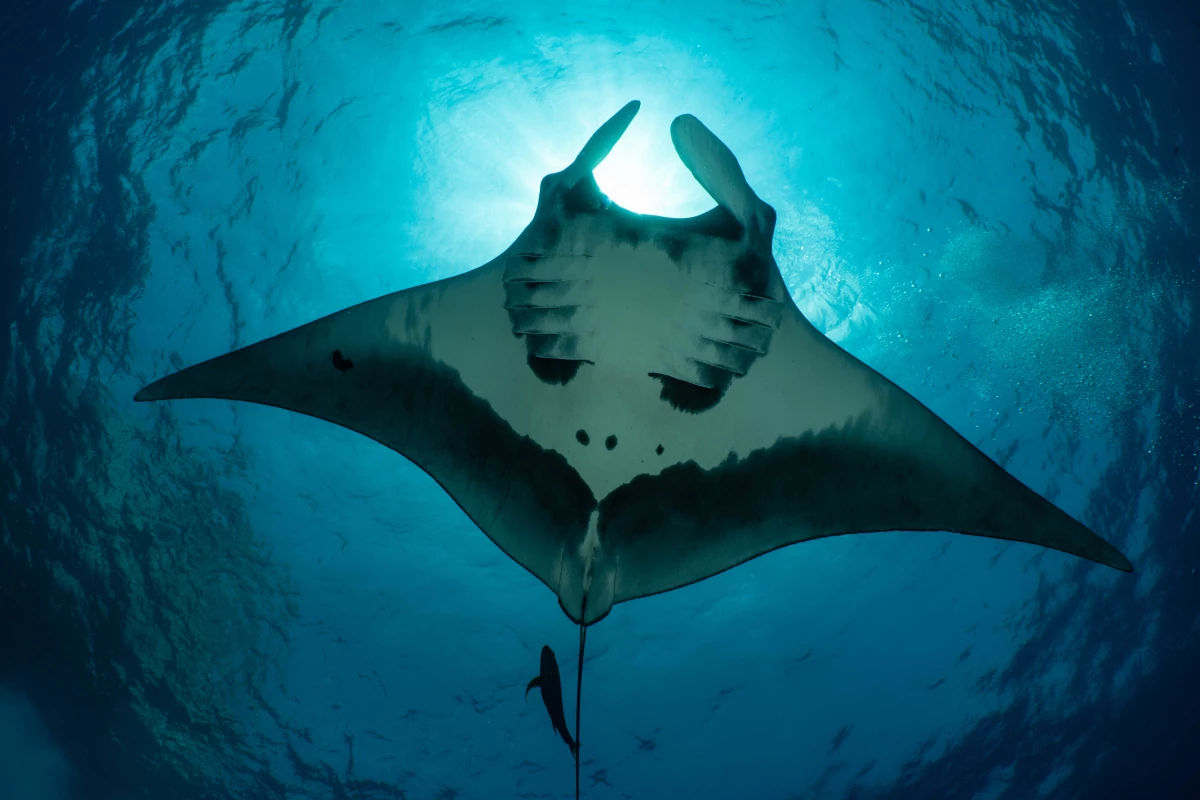Scientists have discovered that oceanic manta rays regularly dive to depths exceeding 1,200 meters—approximately three-quarters of a mile—not for feeding, but rather to navigate the vast ocean. This finding, stemming from a collaborative study involving researchers from Peru, Indonesia, and New Zealand, sheds new light on the behavior of these remarkable creatures, known scientifically as Mobula birostris.
The research team, which included experts from Murdoch University, tagged 24 manta rays across diverse locations—Raja Ampat in Indonesia, the Tumbes region of Peru, and the northeast waters off New Zealand’s North Island. The study yielded an impressive 2,705 tag-days of data, revealing that the mantas frequently undertake extreme dives linked to their navigation.
Revealing the Depths of Manta Behavior
Dr. Calvin Beale, the first author of the study, noted, “We show that, far offshore, oceanic manta rays are capable of diving to depths greater than 1,200 meters, far deeper than previously thought.” The researchers found that on 79 occasions, manta rays dove to significant depths, reaching a maximum of 1,250 meters (0.78 miles). Remarkably, the majority of these deep dives occurred off the coast of New Zealand, where the ocean floor descends sharply.
Each manta ray initiated its first extreme dive shortly after transitioning from the continental shelf into deeper waters. The researchers observed that these dives did not follow a straight descent, suggesting that the mantas were not diving to hunt or evade predators. Instead, they descended in a stepped pattern before spending minimal time at maximum depth. After ascending, the mantas traveled considerable distances, sometimes covering up to 200 kilometers (124 miles) in the following days.
The study suggests that the mantas may rely on environmental cues, such as changes in magnetic field strength, oxygen levels, temperature, and light, to navigate effectively. Dr. Beale articulated this concept, stating, “By diving down and ‘sampling’ these signals, they could build a mental map that helps them navigate across vast, featureless stretches of open ocean.”
Understanding Migration Patterns
The research also indicated that the deep dives correlate with the mantas’ northward migration, particularly as they leave the continental shelf. Dr. Mark Erdmann, Shark Conservation Director at Re:wild, commented, “The deep dives of New Zealand oceanic mantas all occur as they leave the continental shelf and begin their northward migration.” He emphasized that these dives likely serve to refine their navigational bearings.
Furthermore, after conducting deep dives, the manta rays were observed to spend time at the surface, likely recuperating from the thermal stress of the cold waters. This behavior underscores the necessity of understanding how these rays interact with their environment as they migrate annually.
The researchers believe that the stability of the deep ocean environment provides a more accurate navigational framework for the mantas. The unique underwater topography in areas like New Zealand, where shallow waters quickly give way to deep ocean, likely necessitates these recalibrations.
Dr. Beale pointed out the broader implications of the findings: “Understanding the nature and function of deep dives helps explain how animals cross vast, seemingly featureless oceans and connect ecosystems thousands of kilometers apart.”
While the study involved a limited sample size and recorded only specific intervals of behavior, the insights gained pave the way for further research on the navigational capabilities of oceanic manta rays. The findings also highlight the species’ reliance on both coastal and offshore habitats, reinforcing the need for international cooperation in conservation efforts.
The research was published in the journal Frontiers in Marine Science, emphasizing the importance of ongoing studies into the behaviors of migratory species, particularly in regions where ecological knowledge remains limited.





































































